The STRAAT Museum is the hip street art museum in Amsterdam. Located in an abandoned shipyard on the north side, this museum is packed with numerous large-scale murals created by some of the world’s best artists. And it really is amazing!
Have some time in Amsterdam and looking for something really unique? Have you seen all the major attractions in Amsterdam? Don’t want to take a day trip from the city? Is it raining? If you are asking yourself any of these questions, the answer is likely to be a trip to The STRAAT Museum.

The museum is often described as a “best of” street art museum. It’s really not. You are not seeing works that were removed from around the world and brought to the Amsterdam wharf to be displayed. No works were cut out of walls and transported.
Rather, you are seeing the world’s best street artists create new, monumental works to be displayed here in a permanent exhibition. And yes, most of these have been created in situ here. In many ways, that’s better. You’re seeing fresh, new, amazing works. And you’ll be blown away! We promise.
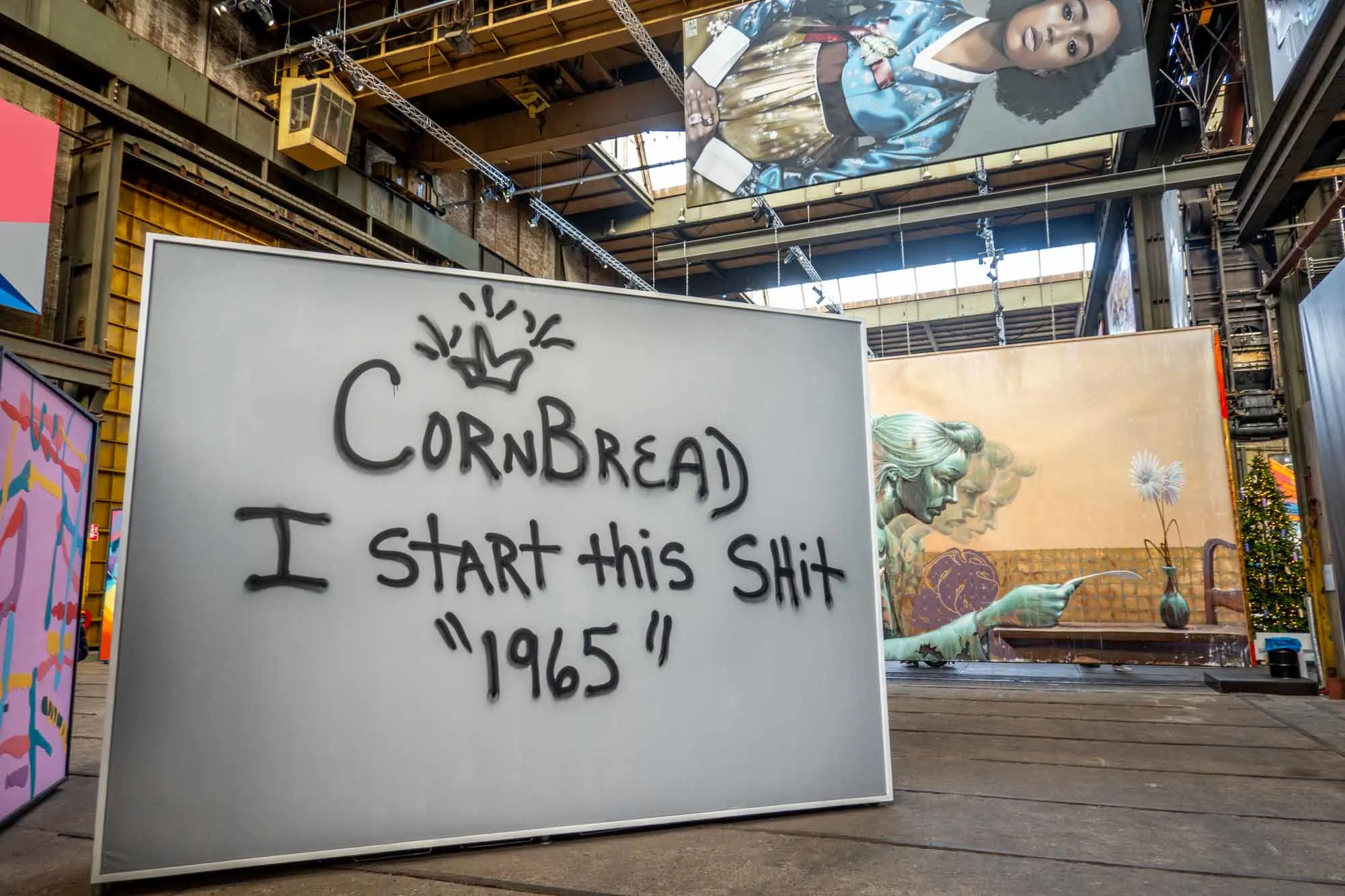
It’s no secret we hail from Philadelphia, the birth city of the street art/post-graffiti movement. Here, CornBread was “getting up” in 1965 and created a whole new thing. STRAAT Museum pays tribute to CornBread and invited him to contribute, creating one of the first works on display.
If you like murals, read on and check out our amazing street art photos to see what the museum is really like.
Overview
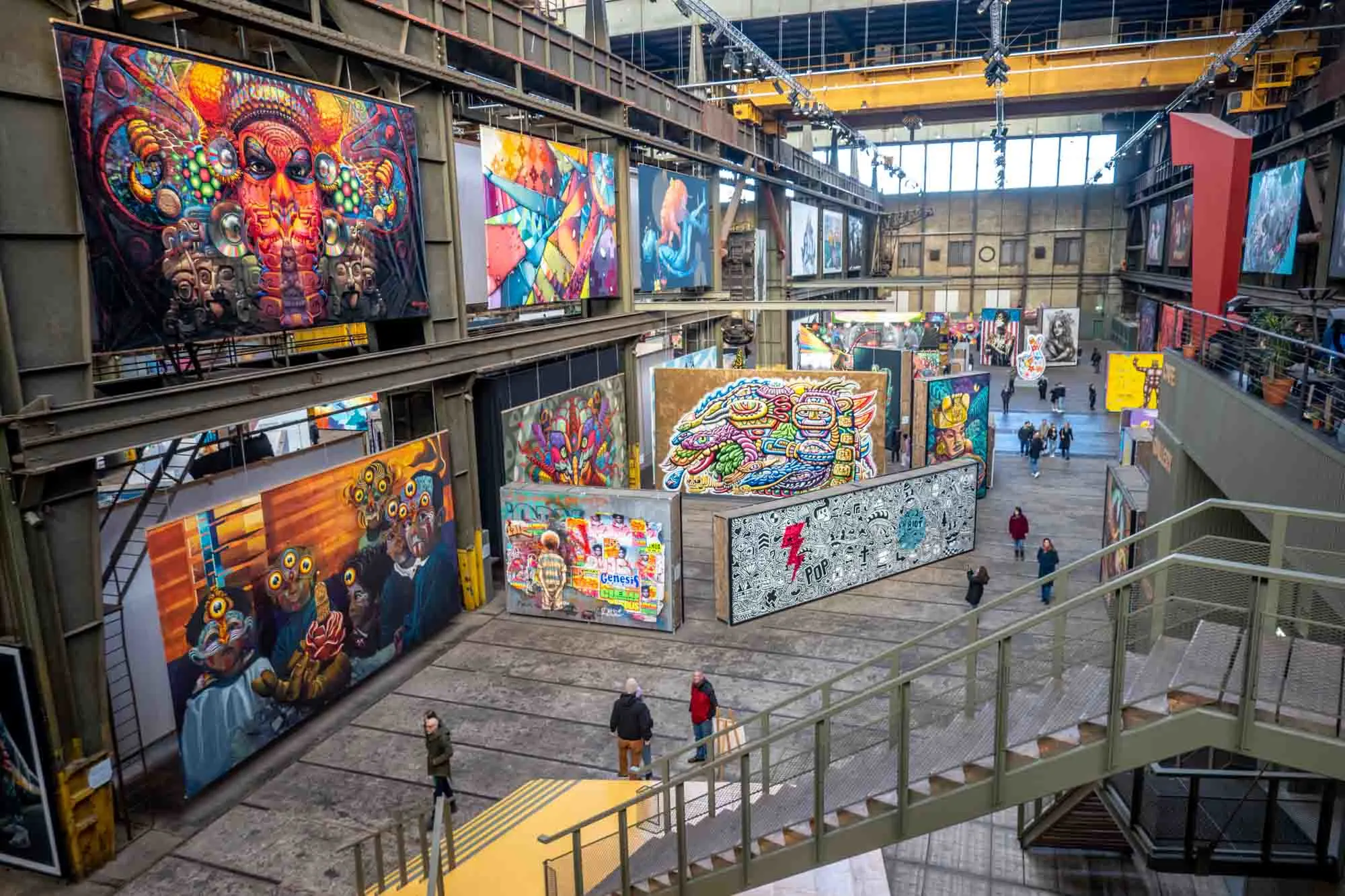
What do you do when heavy industry is no longer the driver of your economy? What do you do when you have a massive factory sitting idle and is covered in graffiti? You embrace the art.
And that’s what happened on Amsterdam’s north side. The ship building company (Nederlandsche Dok en Scheepsbouw Maatschappij – the acronym is NDSM) founded the site in 1916 and ultimately went out of business in 1984, leaving a 90 hectare/220+ acre hole in the city. Through neglect comes opportunity.
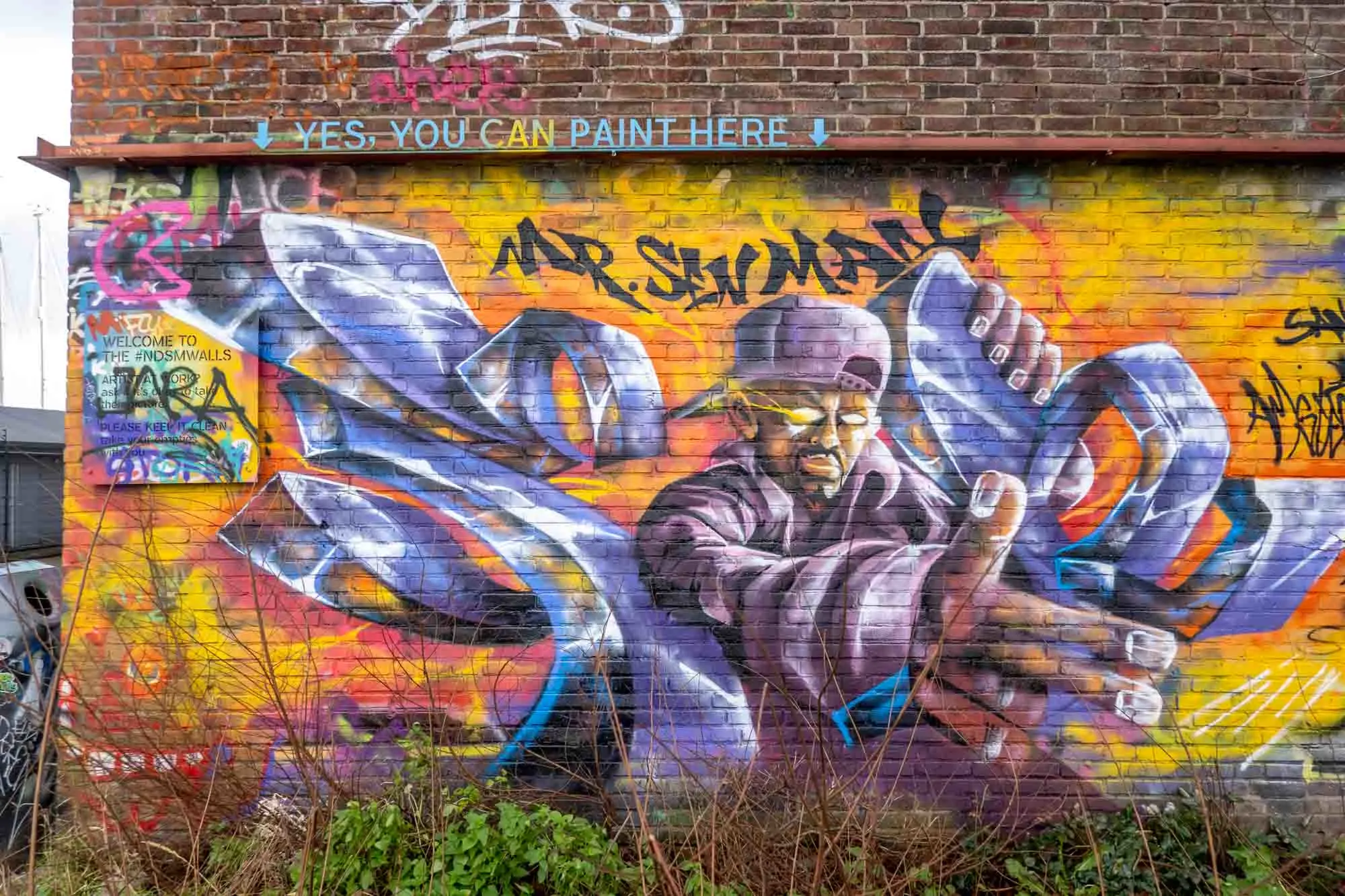
Within days of the closure, enterprising young Amsterdamers visited the site with cans of spray paint and let their thoughts be known. For nearly 20 years, it was a kind of badlands filled with feral tagging and nascent murals. Over time, the quality improved.
The massive 80,000+ square foot warehouse at the heart of NDSM was always a target for graffiti. And it was a very inviting target – those massive walls cried out to be painted.
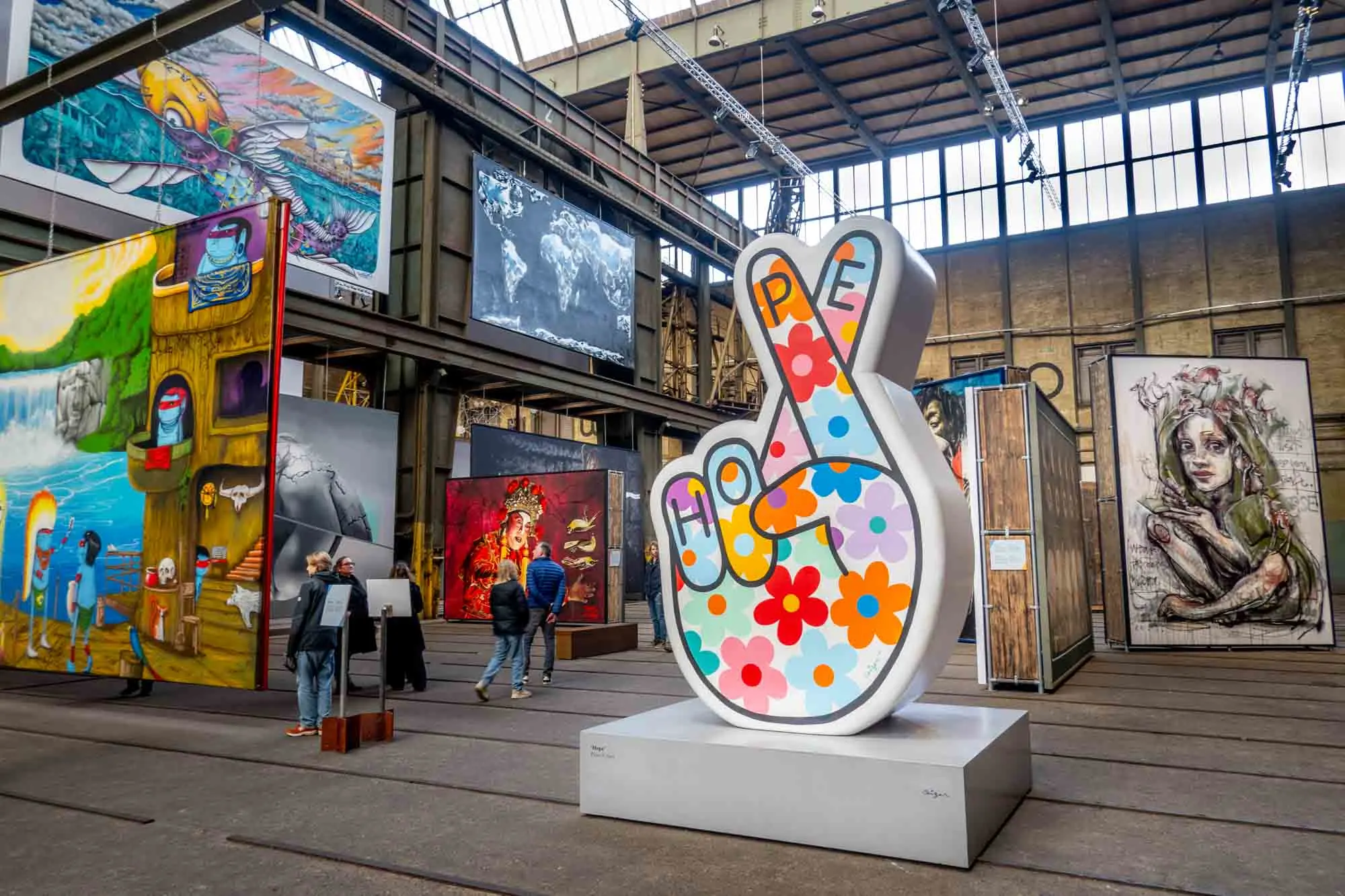
The idea for a museum here was over 5 years in the making. Beginning in 2015, street artists from around the world were invited to the site to begin creating their works, sometimes in solitude, sometimes in collaboration with other artists. By October 2020, enough works were collected to open the museum.
There are more than 150 works in the permanent collection, most on display. These works were created by over 130 artists hailing from 32 different countries on nearly every continent. The works stand like pillars on the uneven concrete floor or are hung from the massive steel beams that once supported shipbuilding.
Themes and Organization
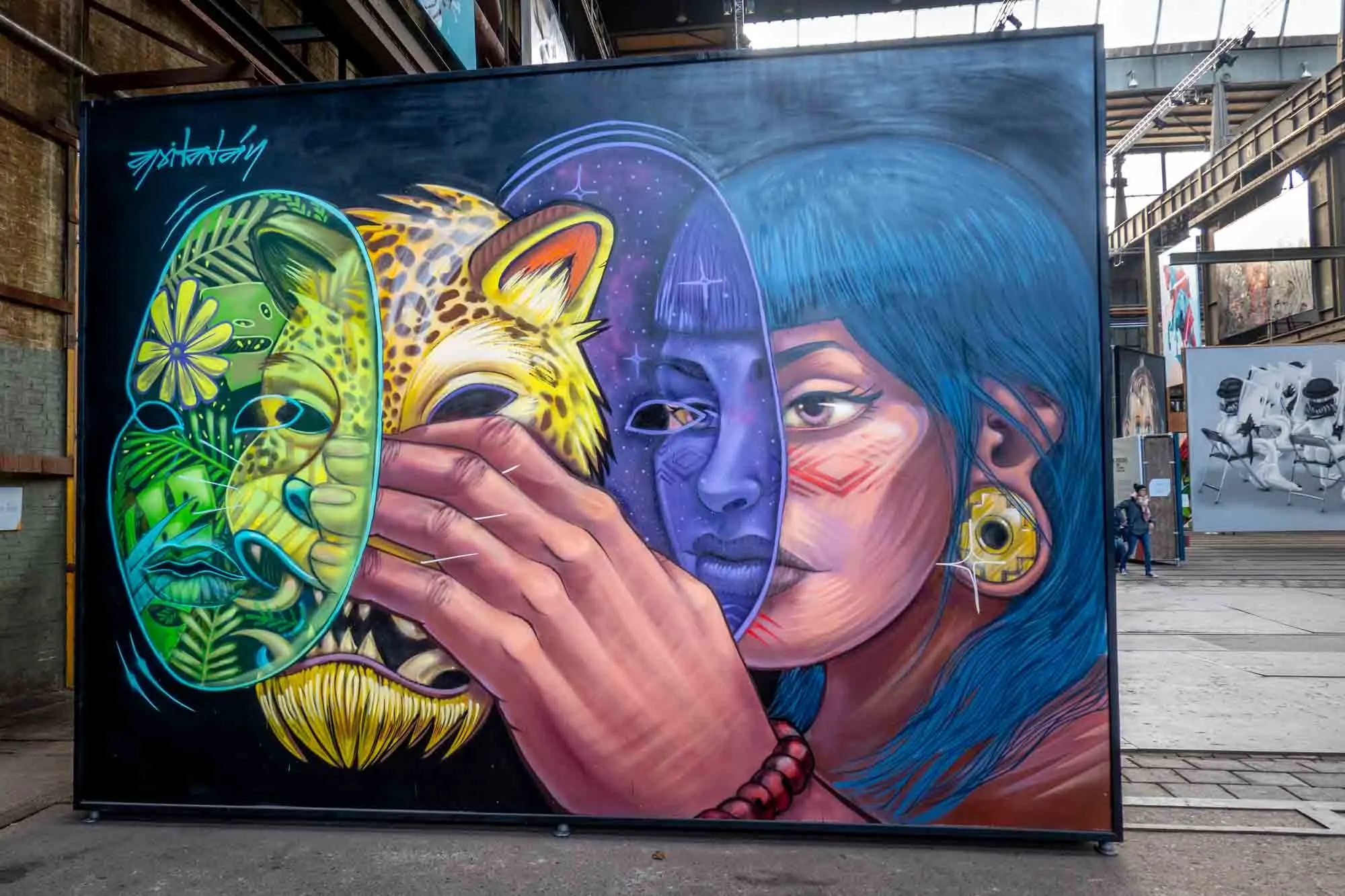
The museum is laid out in 5 sections and each section has a theme. These narrative threads are:
- Personal – using street art to reflect the artist’s interpretation of their world and their place in it
- Aesthetical – creating street art focusing on geometry and shapes
- Grounded – using street art to explore the interplay between the street environment and its surrounding spaces
- Conscious – harnessing the power of street art to comment on social issues, including the environment, racism and power dynamics
- Empathic – examining the interplay between the artist, the viewer, and the bonds that are formed through the work
Some of the sections are crystal clear. All of the works in the Conscious section have a clear identity and purpose. But others are muddier.
Some works in the Personal and Grounded section seem to be interchangeable – that the artist’s reflection of his/her world is also grounded in her/his surroundings. Basically, take the themes with a grain of salt – they are meant to be interpretations by the curators, rather than rigid dogma of a defined style.
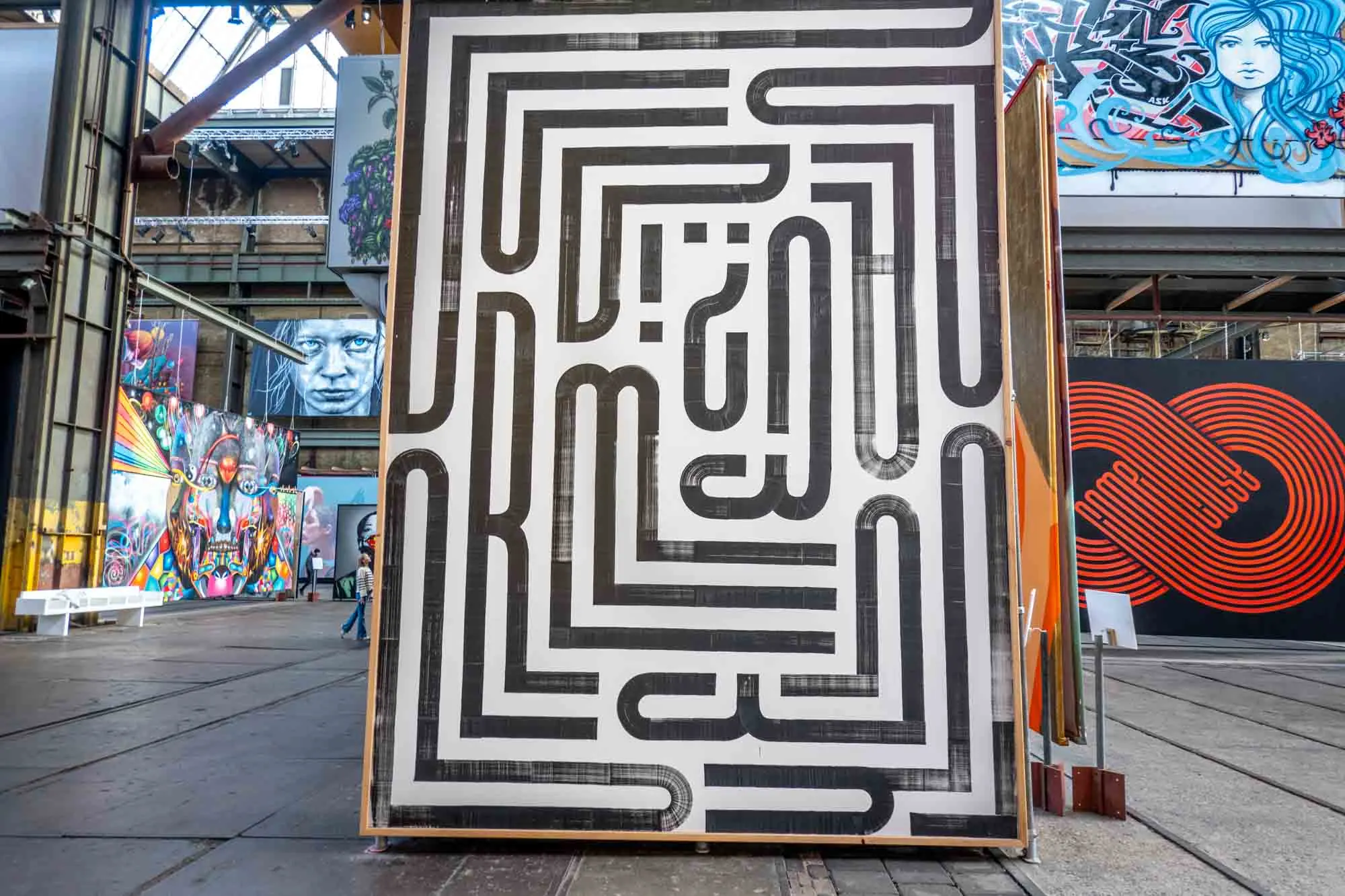
Thinking critically, the themes don’t really make a lot of sense. Maybe they do academics, curators, and art critics, but to the casual observer, it’s all a bit much and confusing, trying to discern meaning where it may not exist. Or coming up with the wrong meaning because we feel like we need to have one. It’s a museum right? While we respect STRAAT for trying to put an organizational structure in place, sometimes it is just pretty to look at.
However, at the very beginning of the exhibit, a question is posed: “Is street art inside still street art?” Now that is an interesting topic!
We would argue yes, this is still street art. The themes, forms, and methods are still that of urban artists. In fact, famous street artists were brought here to create works. It’s a great way of seeing some of the world’s best, all in one place.
Admission
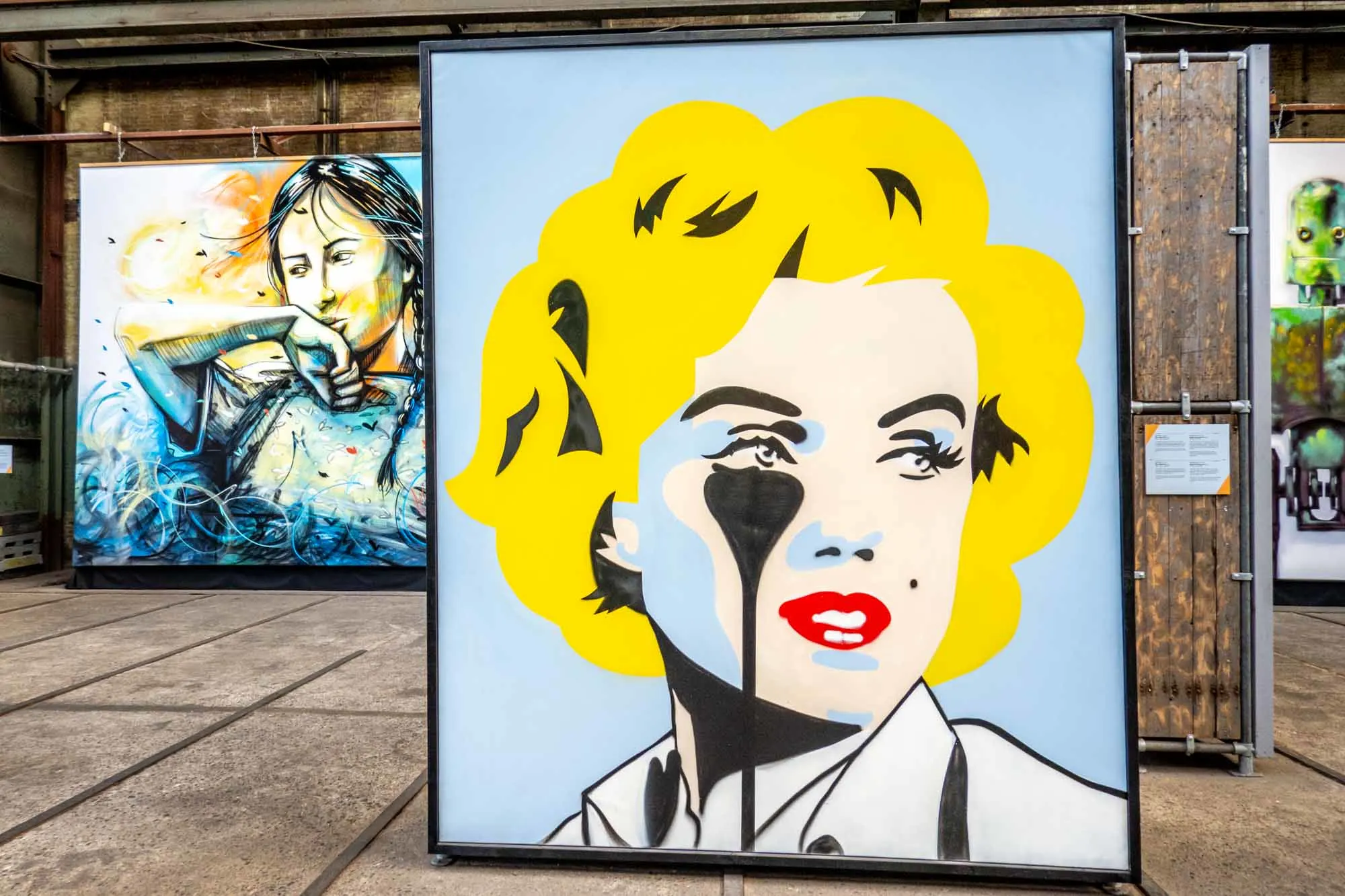
Admission cost is €18.50 for adults and €19.50 for children/youth. NOTE: The Museumkaart (Museum Card) is not valid for admission.
Tours
The handy audio tour is available for €2.50. There are guided tours offered on the weekends for a nominal additional cost. Pre-booking a tour is generally advisable since the weekends can be quite busy at the museum.
Concessions

The museum has a panoramic terrace that overlooks the works and a small café can be found here. They serve a limited selection of food items, but the few we sampled were quite good (far better than normal museum café fare). If that’s not your jam, there are a number of cafes and restaurants in the rapidly developing NDSM neighborhood.
They also have a gift shop where you can spend your money on any number of things, including original artworks by some of the artists featured in the museum.
Getting There
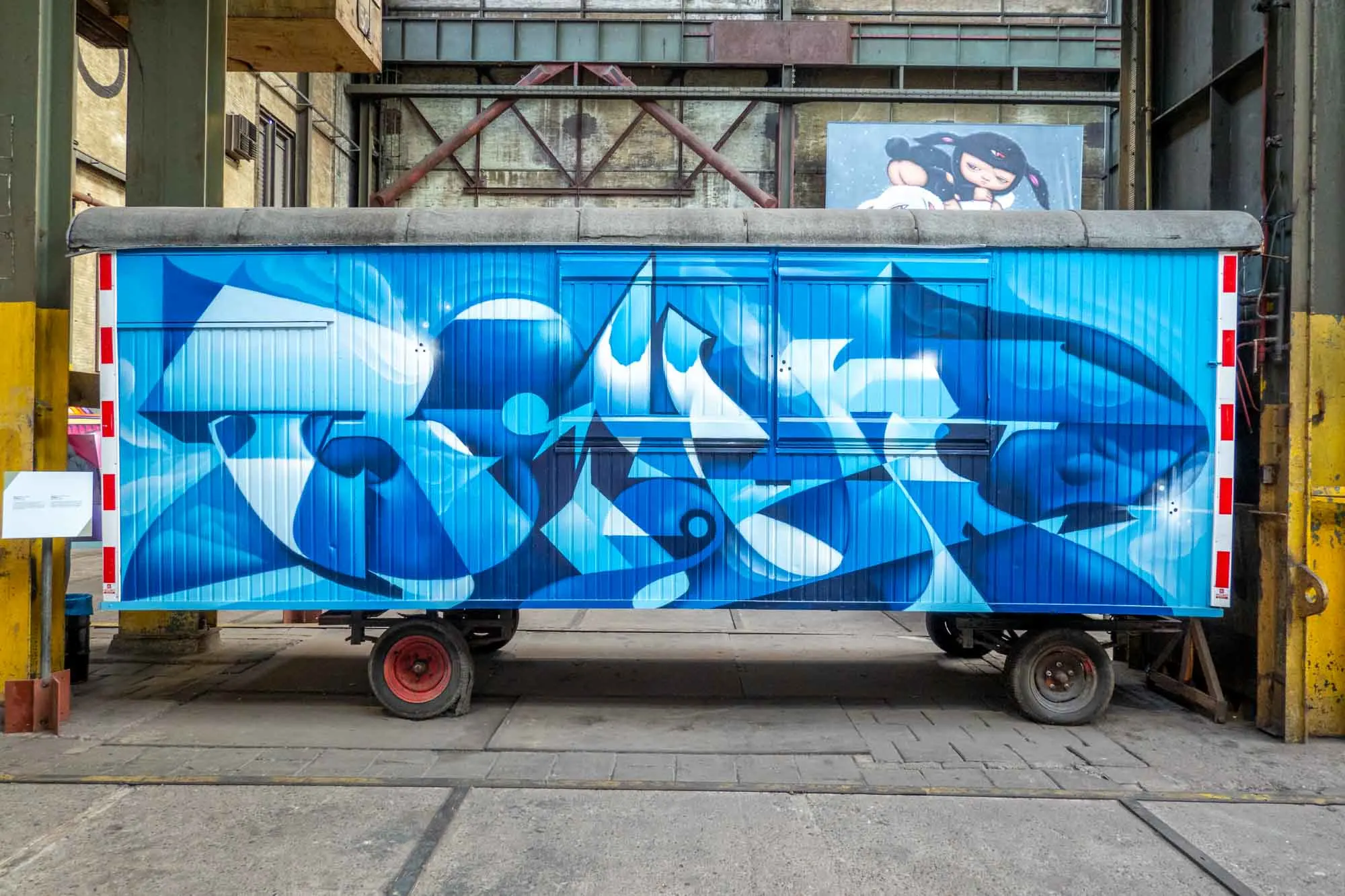
The STRAAT Museum is located at NDSM-Plein 1. The best way to reach it is to take the free GVB Amsterdam ferry from the city center. The ferry stop is located behind the Central Station. Make sure you get on the left ferry to the NDSM-werf (and not the other ferry). The ferry should be identified as F4 or F5. The trip takes about 15 minutes and there are several trips per hour.
Don’t like boats? Take the North-South metro line 52 to Noorderpark. From there, get a bus to Atatürk/Klaprozenweg bus stop. The bus lines are 35, 391, and 394. If you are coming by car, there’s quite a bit of street parking in the vicinity and a pay-lot across the street.
Warning: There is ANOTHER Amsterdam street art museum, operating out of a garage building in the middle of a housing block in a far-flung section of the city and seemingly open by appointment only. If you are using an app for navigation, do not confuse them (as we did). You will have a long bus ride to nowhere. Put “STRAAT Museum” into your app, and NOT “street art museum.” You can thank us later.
More information can be found on the STRAAT Museum website.
Here are some more incredible works from the STRAAT street art museum:

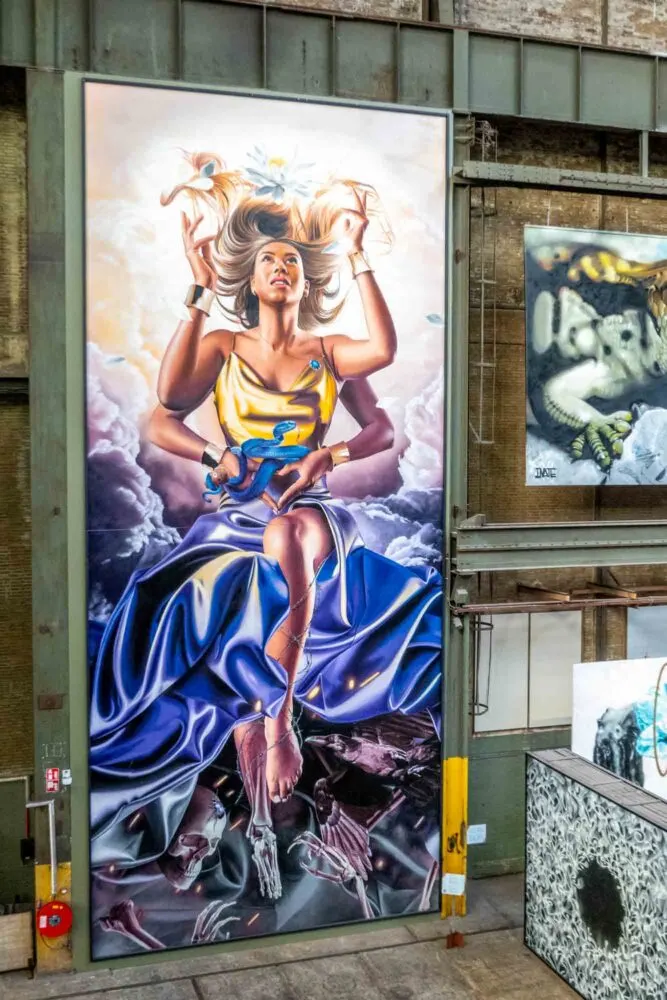
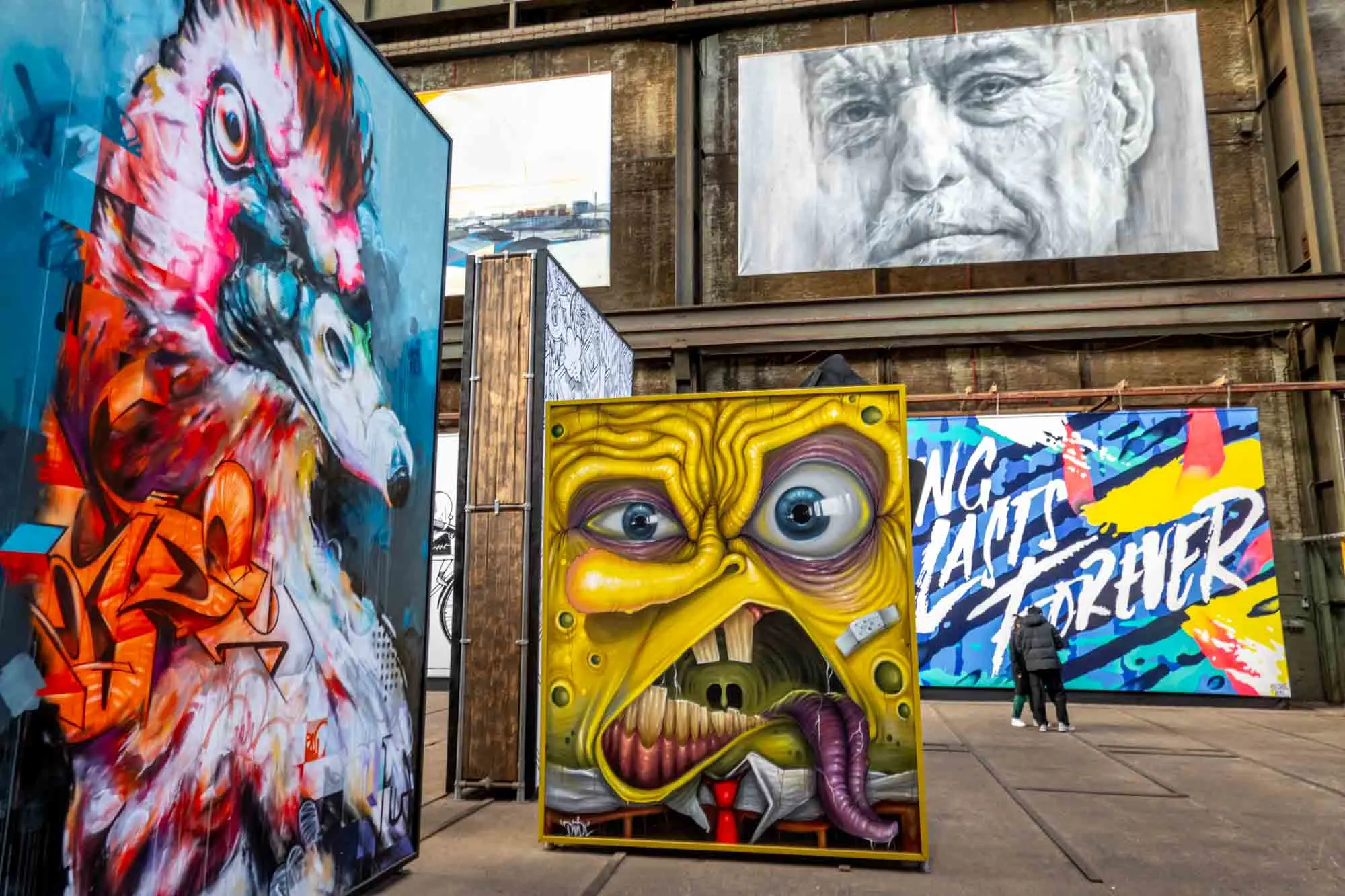


Lance Longwell is a travel writer and photographer who has published Travel Addicts since 2008, making it one of the oldest travel blogs. He is a life-long traveler, having visited all 50 of the United States by the time he graduated high school. Lance has continued his adventures by visiting 70 countries on 5 continents – all in search of the world’s perfect sausage. He’s a passionate foodie and enjoys hot springs and cultural oddities. When he’s not traveling (or writing about travel), you’ll find him photographing his hometown of Philadelphia.
